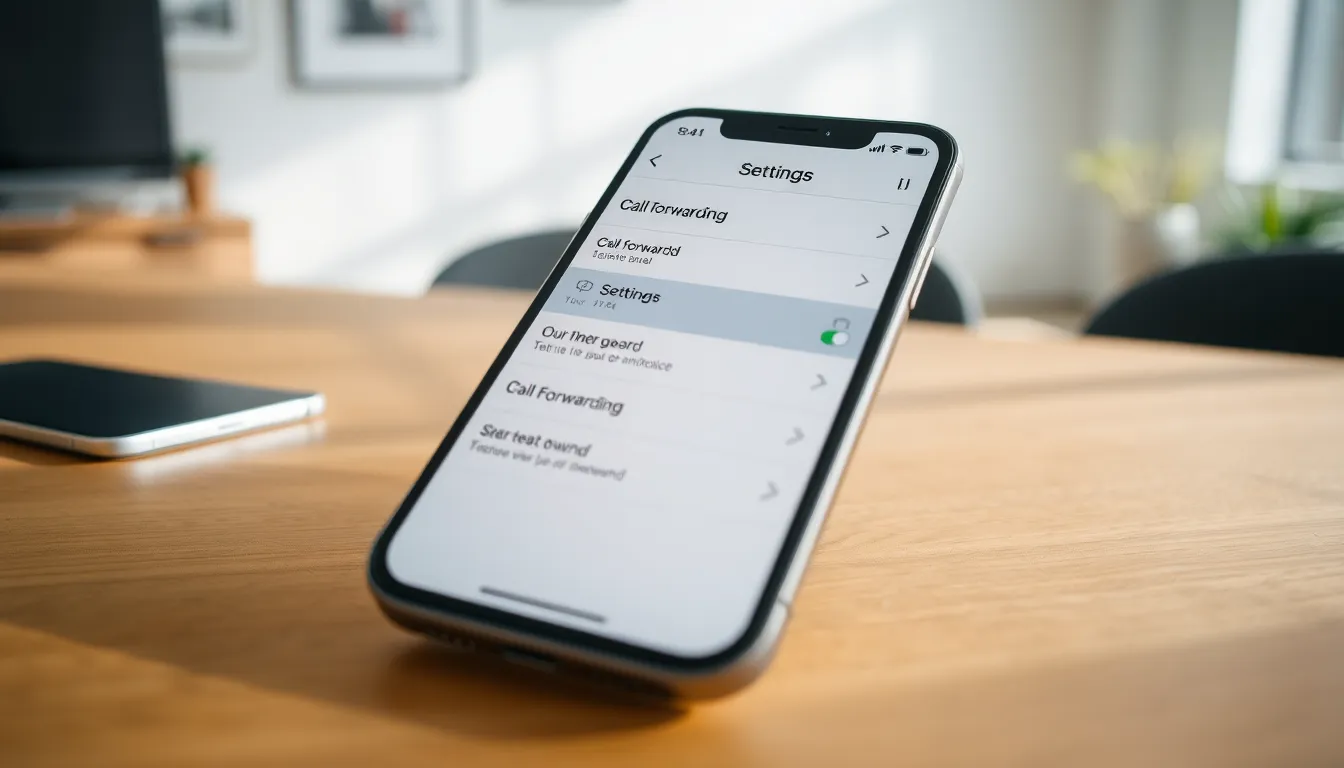In today’s fast-paced world, missing a call can feel like losing a winning lottery ticket. But fear not, iPhone users! Call forwarding is here to save the day—like a superhero for your phone. Imagine this: you’re out and about, juggling life’s chaos, and your phone rings. Instead of scrambling to answer, you can seamlessly redirect those calls to another number.
Table of Contents
ToggleUnderstanding Call Forwarding
Call forwarding allows iPhone users to redirect incoming calls to another number. This feature ensures that important calls aren’t missed, even when users can’t answer their phones.
What Is Call Forwarding?
Call forwarding is a telecommunications feature that transfers incoming calls from one phone number to another. Users can enable this feature through their carrier settings. Configuration options often include forwarding all calls, forwarding when busy, and forwarding when unanswered. Different carriers might offer various options, so checking with the provider is essential for specific features available.
Benefits of Call Forwarding
Call forwarding offers several advantages for iPhone users. It ensures constant communication by directing calls to a reachable number. Users can avoid missing critical calls during busy hours or while traveling. Additionally, this feature enhances productivity by managing calls seamlessly. Flexibility stands out as a key benefit, allowing users to customize call handling based on their needs. Privacy also improves when users can forward work calls to specific numbers, keeping personal lines separate.
How to Enable Call Forwarding on iPhone

Enabling call forwarding on an iPhone is straightforward. Users can follow a simple series of steps to set it up.
Step-by-Step Guide
- Access the Settings app on the iPhone.
- Scroll to Phone and tap it.
- Select Call Forwarding.
- Toggle the Call Forwarding switch to enable the feature.
- Enter the desired phone number where calls should be forwarded.
- Tap the Back button to save the configuration.
Following these steps ensures all calls are redirected to the selected number. Users can easily verify if forwarding is active with an indicator next to the Call Forwarding option.
Troubleshooting Common Issues
Occasionally, users encounter problems with call forwarding. Confirming the feature is enabled is the first step. Checking for carrier restrictions ensures there are no limitations set by the service provider. Restarting the iPhone may resolve minor glitches affecting functionality. Users can also check for software updates, as outdated systems might hinder call forwarding. If issues persist, contacting the service provider for assistance can provide specific solutions.
Alternative Methods for Call Forwarding
Several alternative methods for call forwarding exist beyond the standard settings in iPhone. These options may enhance convenience and provide users with greater flexibility.
Using Carrier Settings
Carrier settings can offer sophisticated call forwarding features. Users often access unique options provided by their mobile operators. To utilize this method, contact the carrier and inquire about specific features available. Many operators provide additional forwarding options, such as conditional forwarding. Users can set rules for when calls should forward based on availability. Checking the carrier’s website might reveal instructions tailored for iPhones. This method allows for customization that suits individual needs.
Third-Party Apps
Third-party apps present another viable option for call forwarding. Various applications are designed to manage calls more efficiently. Users can explore options like Google Voice or Call Forwarding that assist in redirecting calls. Many of these apps provide features such as voicemail integration. Settings within these applications usually allow fine-tuning for optimal performance. Users may find these solutions particularly useful for managing multiple numbers or separating work and personal communications. Each app typically includes user-friendly interfaces that simplify the setup process.
Managing Call Forwarding Settings
Managing call forwarding settings on an iPhone offers users flexibility in handling incoming calls. Users can easily adjust these settings based on their preferences and needs.
Turning Call Forwarding On and Off
To activate or deactivate call forwarding, start by opening the Settings app. Next, navigate to Phone, then select Call Forwarding. The toggle switch allows users to turn the feature on or off. Enter the forwarding number once it’s activated. To disable it, simply toggle the switch back to the off position. Confirming the status of call forwarding is essential to ensure that calls are forwarded correctly.
Customizing Forwarding Options
Customizing forwarding options enhances call management capabilities. Users can forward all calls to a new number for continuous accessibility. Alternatively, options include forwarding calls only when busy or unanswered. Accessing these options is straightforward through the Call Forwarding menu in Settings. Users should enter the desired forwarding number for each chosen option, ensuring calls reach the right destination based on their availability. Review these settings regularly to accommodate changes in communication needs.
Getting call forwarding set up on an iPhone is a straightforward process that can significantly improve communication. By redirecting calls to another number, users won’t miss important calls even when they’re busy or away from their phones.
With various options available, including forwarding all calls or only when busy, individuals can tailor their settings to meet their needs. Regularly checking and adjusting these settings ensures they remain effective as circumstances change.
Whether using built-in features or exploring third-party apps, call forwarding enhances productivity and provides peace of mind. Embracing this feature allows users to stay connected in today’s fast-paced world.




